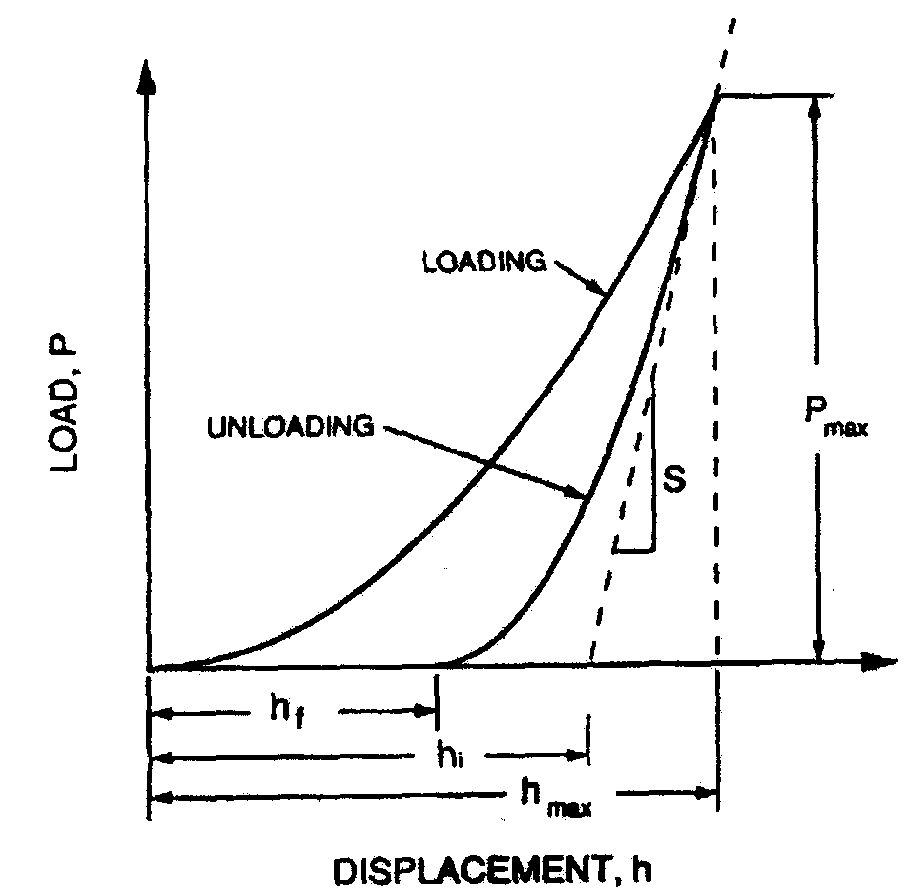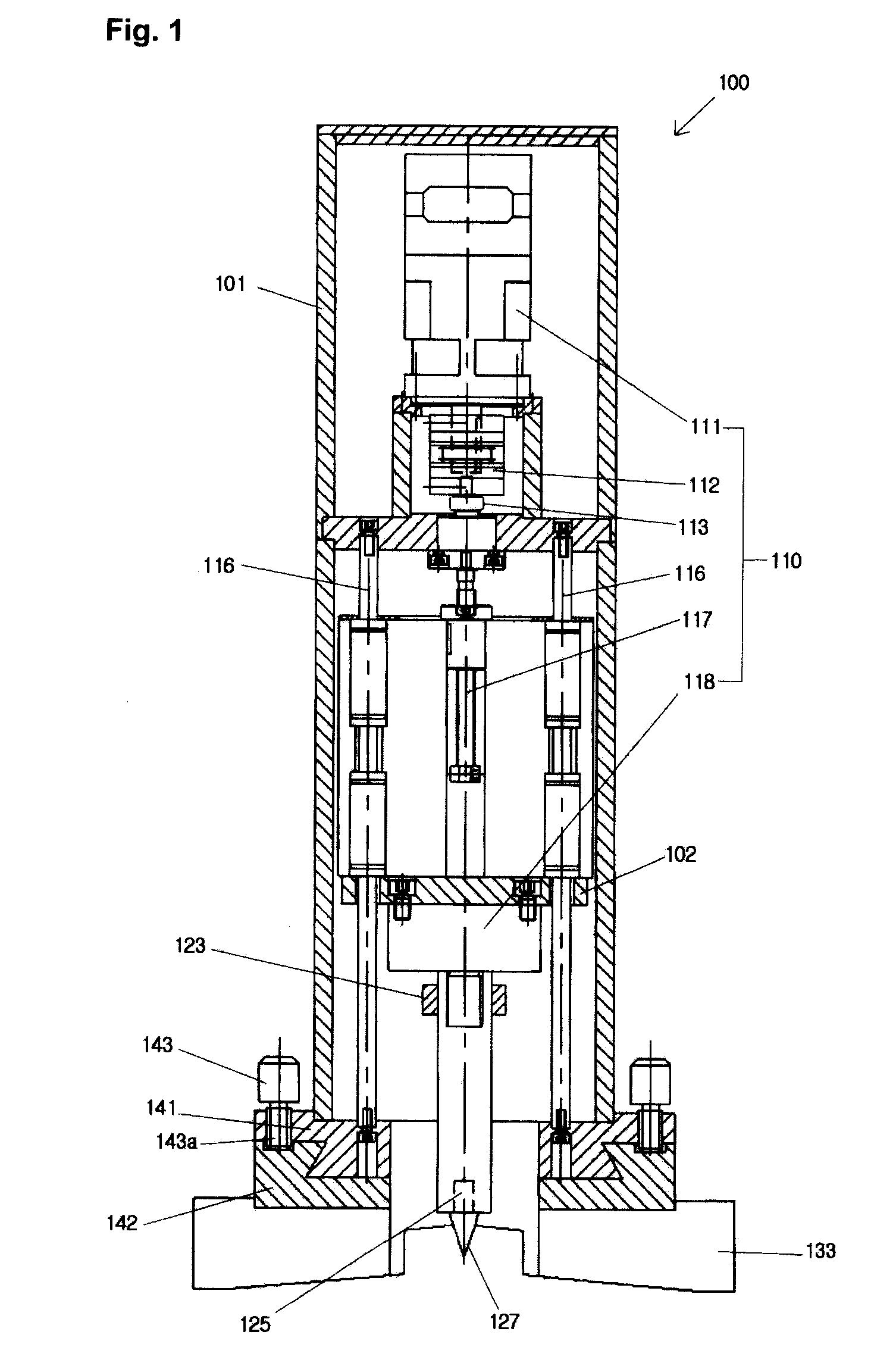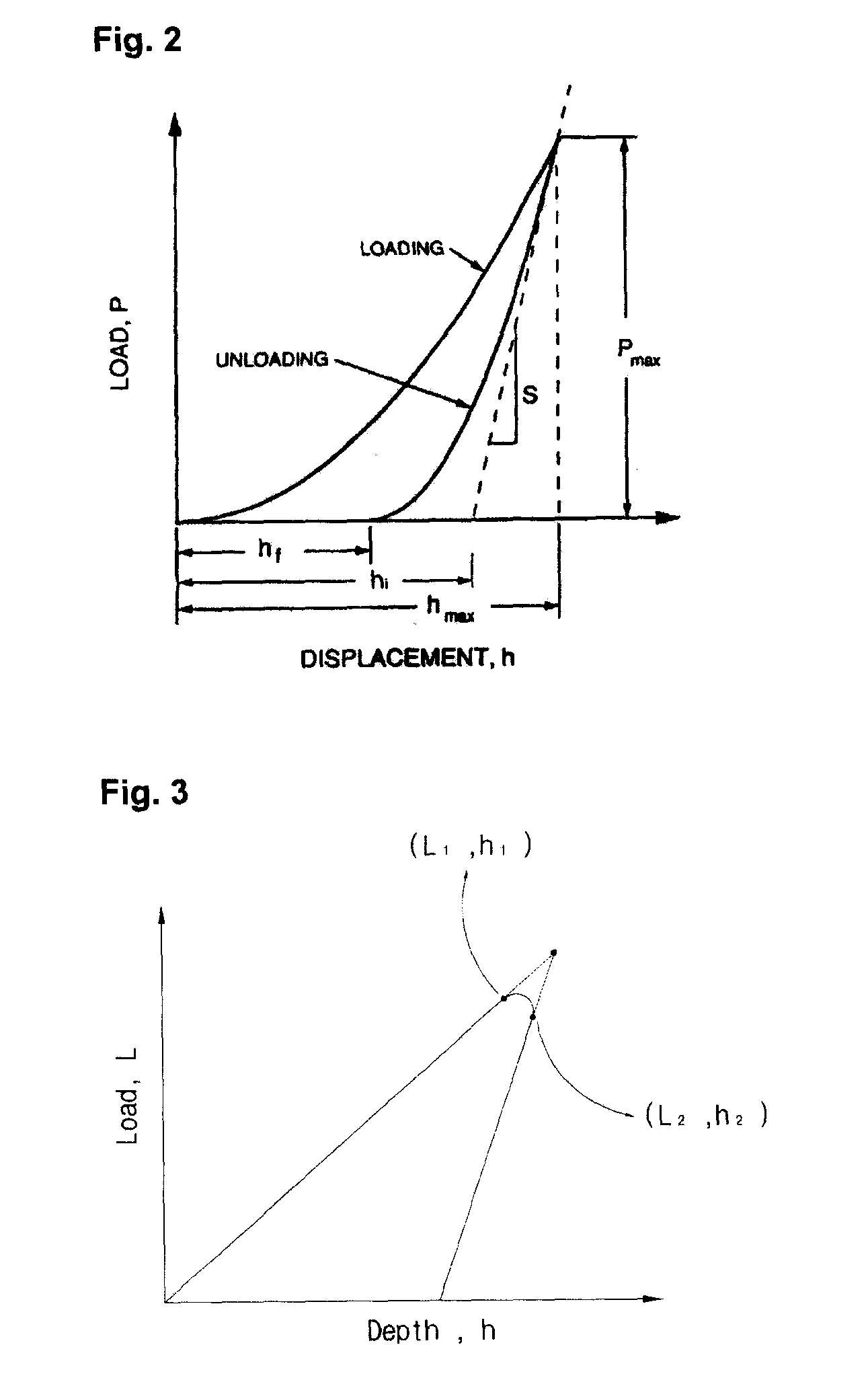Evaluating Method of the Residual Stress Determining Method Using the Continuous Indentation Method
- Summary
- Abstract
- Description
- Claims
- Application Information
AI Technical Summary
Benefits of technology
Problems solved by technology
Method used
Image
Examples
first embodiment
Measurement of Residual Stress of a Material Exclusive of a Weldment
[0090]The method of measuring residual stress of a material exclusive of a weldment is a technique of measuring the residual stress of the material from a normal load difference ΔL, which is conducted through comparison of a reference specimen (stress-free state) and an indentation load-depth curve obtained in a stressed state, and taken from the slope of a curve generated depending on an actual indentation depth hc, contact area Ac, indentation hardness HIT and residual stress. The residual stress measuring method includes steps of: obtaining a stress reference curve in a stress-free state, obtaining a stressed curve in a stressed state, comparing the two curves respectively obtained in the stress-free state and stressed state to each other, and measuring the residual stress of the material using both a load difference ΔL between the two curves obtained through the comparison and a contact area obtained from the lo...
second embodiment
Measurement of Residual Stress for a Weldment
[0130]The biggest problem experienced in the conventional method of measuring residual stress of a weldment resides in that the weldment in a residual stress-free state cannot be measured in the field. Because a material actually used in the field cannot be directly subjected to a mechanical or thermal technique to remove stress, it is not easy to quantitatively measure residual stress of the material. Therefore, to remove stress, a destructive technique must be used. However, the destructive technique of removing stress from a material cannot be adapted to field use, but may only be used in laboratories. Furthermore, to adapt a conventional nondestructive technique to measure residual stress in the field, a physical method is used to approximate a residual stress-free state. However, the conventional nondestructive technique cannot reduce a measurement error caused both by its theoretical background and by data comparison, so that it has...
PUM
 Login to View More
Login to View More Abstract
Description
Claims
Application Information
 Login to View More
Login to View More - R&D
- Intellectual Property
- Life Sciences
- Materials
- Tech Scout
- Unparalleled Data Quality
- Higher Quality Content
- 60% Fewer Hallucinations
Browse by: Latest US Patents, China's latest patents, Technical Efficacy Thesaurus, Application Domain, Technology Topic, Popular Technical Reports.
© 2025 PatSnap. All rights reserved.Legal|Privacy policy|Modern Slavery Act Transparency Statement|Sitemap|About US| Contact US: help@patsnap.com



